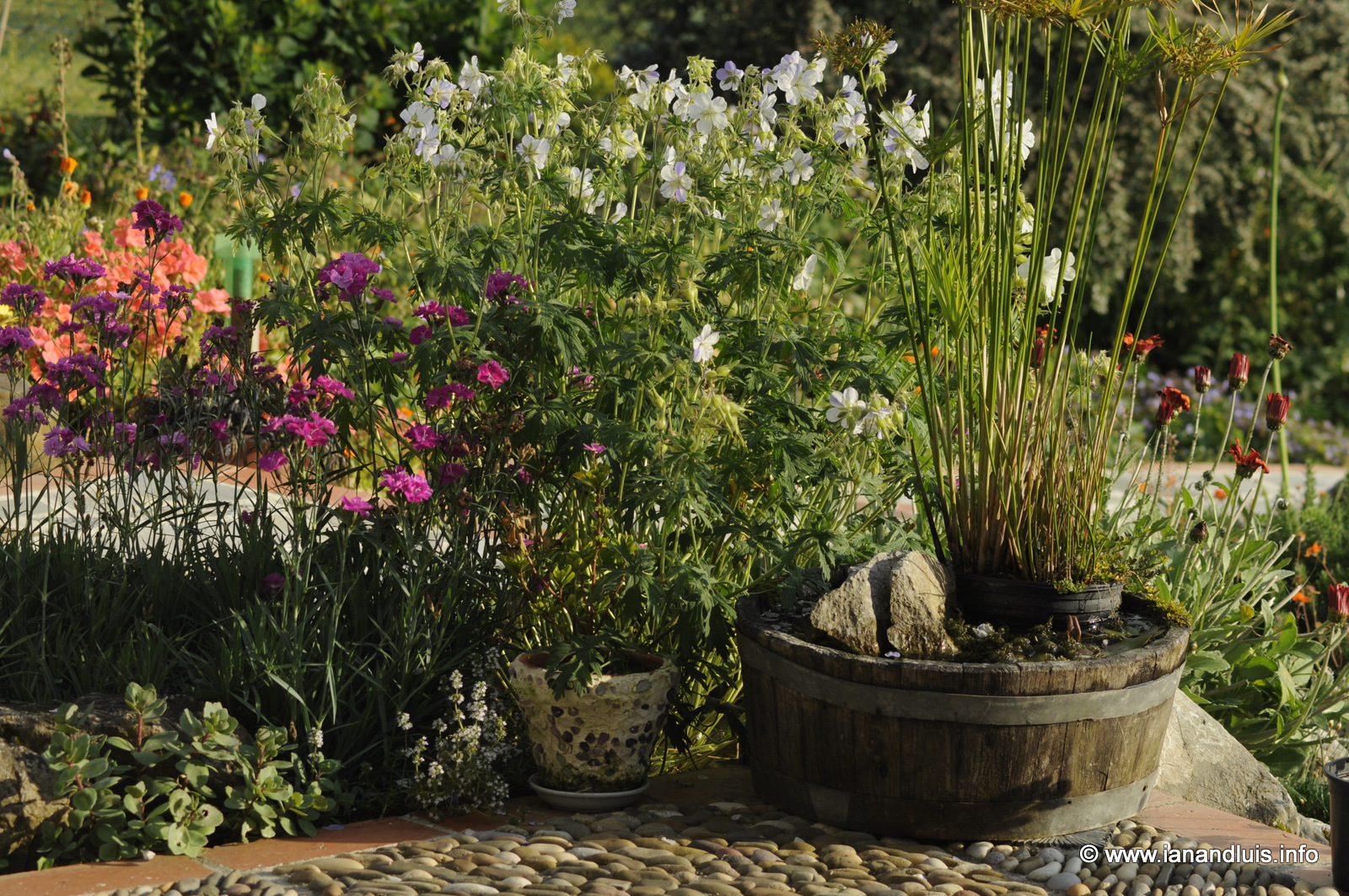The midwife toads (alytes obstetricans) are on the move. They were spotted carrying their eggs, navigating the limestone rockery, trailing plants and inquisitive cats. Here in Spain they are currently listed as 'Near Threatened' on the ICUN Red-list (International Union for Conservation of Nature).
We are lucky that the midwife toad is plentiful here at La Pasera, the rockery is a perfect habitat for them as there are many moist crevices where they can hide from the heat of the day. Most of the year we can hear them sing out once the afternoon sun starts to set. Their high pitched whistle-like sound: poo...poo...poo is repeated every one or two seconds and other toads will join in, signalling their presence.
If you are unfamiliar with this toad it may come as a surprise to learn that it is the male of the species that carries the eggs; up to 170 eggs at a time, sometimes originating from different females. They have peculiar mating habits with the female and male engaged in a mating ritual, the male inserting a toe into the females cloacae thereby enabling the release of eggs which he then sticks his legs through, sprays them with urine and sperm and carries them for 3-6 weeks until he finds a safe spot to release the eggs.
We have several water sources in the garden but the one the midwife toads prefer is a small half barrel filled with water, plants and a rock. It is permanently teaming with tadpoles thereby ensuring the next generations of this wonderful creature.
The midwife toad is small, 4-6 cm in length with the males being slightly smaller than the females. They live approximately 5 years if not consumed by their natural predator, the viper or large birds. Their diet is mainly spiders and beetles with a few flies and worms when available.
Further information can be found here:
IUCN Red-List
We are lucky that the midwife toad is plentiful here at La Pasera, the rockery is a perfect habitat for them as there are many moist crevices where they can hide from the heat of the day. Most of the year we can hear them sing out once the afternoon sun starts to set. Their high pitched whistle-like sound: poo...poo...poo is repeated every one or two seconds and other toads will join in, signalling their presence.
We have several water sources in the garden but the one the midwife toads prefer is a small half barrel filled with water, plants and a rock. It is permanently teaming with tadpoles thereby ensuring the next generations of this wonderful creature.
The midwife toad is small, 4-6 cm in length with the males being slightly smaller than the females. They live approximately 5 years if not consumed by their natural predator, the viper or large birds. Their diet is mainly spiders and beetles with a few flies and worms when available.
Further information can be found here:
IUCN Red-List









Amazing story!
ReplyDeleteAmazing creatures David. :-)
DeleteGreat photos.
ReplyDeleteThanks
DeleteReally interesting post and wonderful photos! You are lucky to see them. Love seeing the pics of the male carrying the eggs.
ReplyDeleteThanks - we have many around especiallay since creating a rockery with lots of underground hiding holes.
DeleteMidwife Toads - a fitting name. I've never come across this before; one of the perks of blog link parties - so much to learn. Thanks for sharing such clear pictures and information. A most interesting mating habit; my word! All the best to all those eggs; I wonder if the female toad wishes she carried the eggs. Lovely to see the shared responsibility. #AnimalTales.
ReplyDeleteThank you. I'm not sure about the shared responsibility bit - the male seems to take most of the responsibility...that makes a change I suppose...;-)
DeleteWonderful shots, I must look out for some here, they are sure to be around on the farm. #AnimalTales
ReplyDeleteThank you - yes I am sure you might have them but the timing of egg laying and migration may be different to here?
DeleteFascinating - my kids would love spotting these midwife toads (what a great name :).
ReplyDeleteThe kids would love them and they are relatively small and not too shy.
DeleteJust wow...great photo doc. Thank you.
ReplyDeleteThanks Helen
DeleteApparently we do have midwife toads up in Normandy but I have never seen them. And thank you for the info on toad sex - remind me never to come back as a toad!!
ReplyDeleteMany thanks for adding these interesting creatures to #AnimalTales and apologies for being so tardy in commenting – too many other things got in the way of blogging this week!
wonderful photo's. In South Africa in October time all we could hear was a deep barking sound which came from the toads, I suspect a gentle poo....poo....poo is nicer to listen to
ReplyDelete